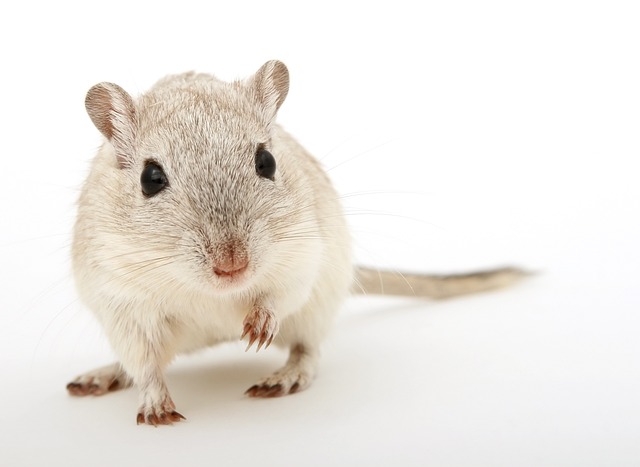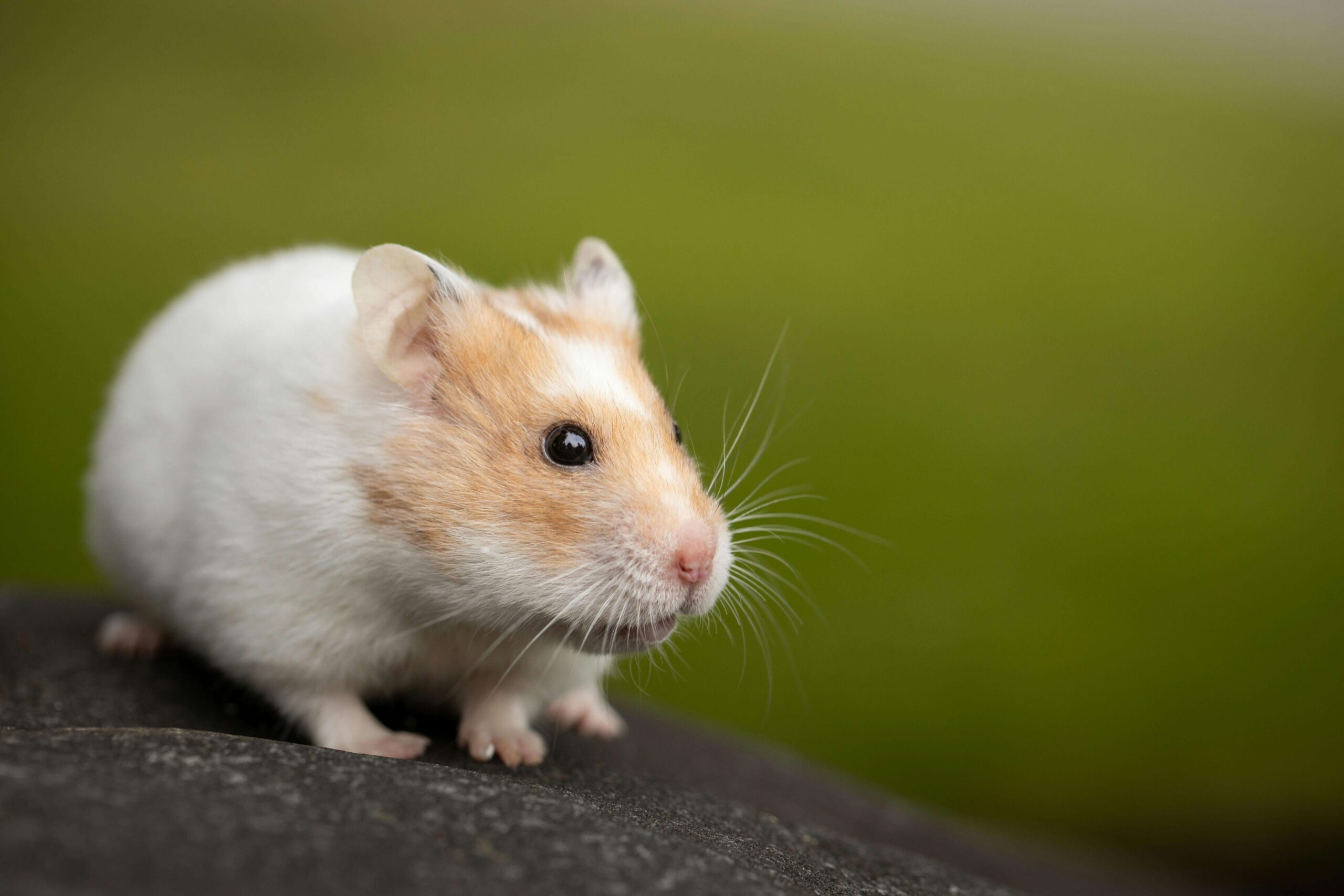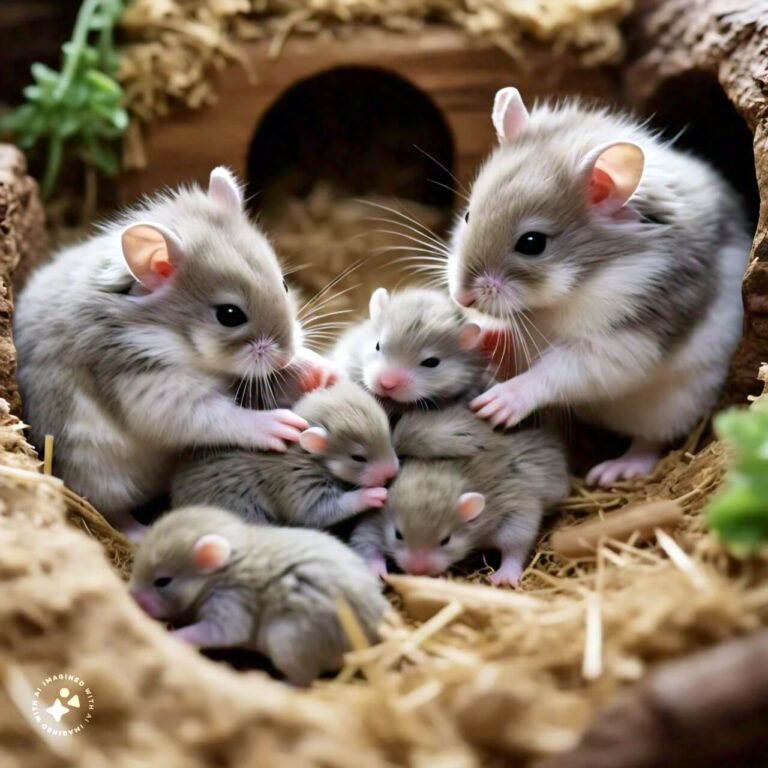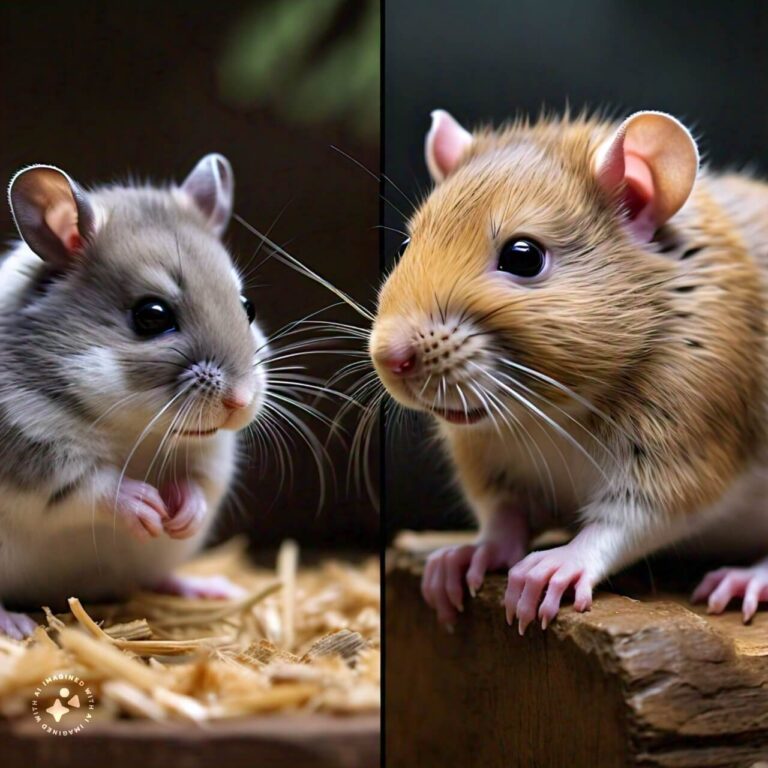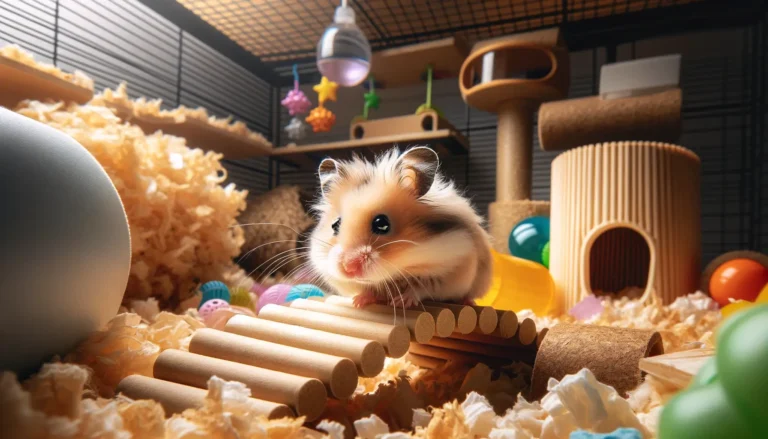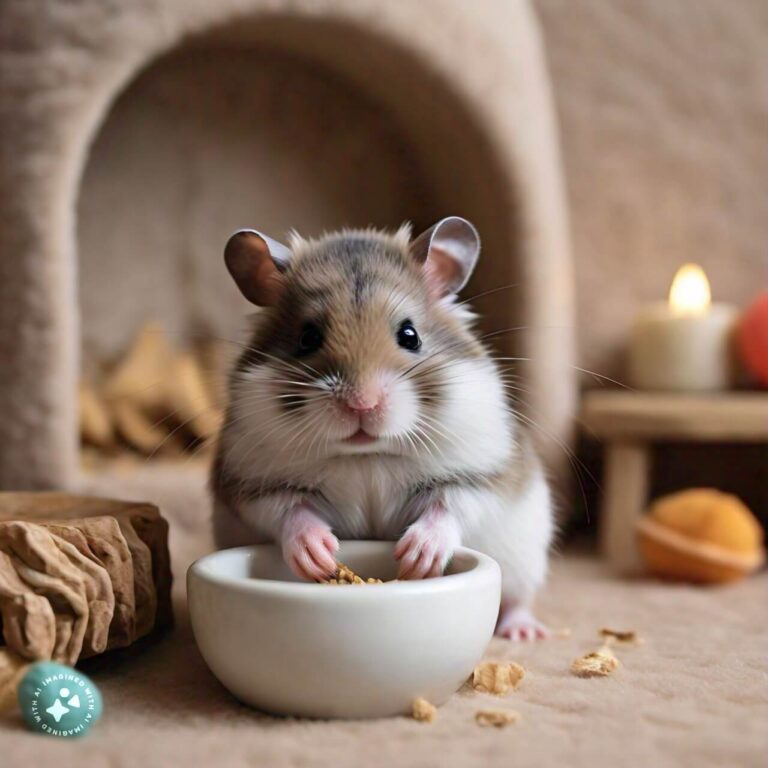When Do Hamsters Hibernate – Hamsters.pk
Understanding Hamster Hibernation: What It Is and Why It Happens
Hamsters are adorable, tiny creatures that make wonderful pets. However, many hamster owners may be surprised to learn that their furry friends are capable of hibernating. Hibernation is a natural process that allows hamsters to conserve energy during periods of cold temperatures or food scarcity. In this article, we’ll delve into the details of hamster hibernation and explore what it is and why it happens.
What Is Hamster Hibernation?
Hibernation is a state of deep sleep that allows animals, including hamsters, to survive harsh environmental conditions. During hibernation, a hamster’s body temperature drops significantly, and its metabolic rate slows down. This enables the hamster to conserve energy and survive on minimal resources.
In the wild, hamsters typically hibernate during the winter months when food is scarce, and temperatures are low. However, pet hamsters may also attempt to hibernate if their living conditions are not optimal.
Why Do Hamsters Hibernate?
Hamsters hibernate for various reasons, primarily related to their environmental conditions. Some of the key factors that can trigger hibernation in hamsters include:
- Cold temperatures: If the ambient temperature drops below a certain threshold (usually around 65°F or 18°C), hamsters may begin to prepare for hibernation.
- Lack of food: In the wild, hamsters may hibernate when food sources become scarce. Pet hamsters may also attempt to hibernate if they are not receiving enough food or if their diet is inadequate.
- Shorter daylight hours: Hamsters are sensitive to changes in daylight hours. As the days grow shorter during winter, hamsters may interpret this as a signal to prepare for hibernation.
- Stress: Stress can also trigger hibernation in hamsters. Factors such as changes in environment, inadequate housing, or illness can all contribute to stress and lead to hibernation.
The Risks of Hamster Hibernation

While hibernation is a natural process for hamsters, it can be dangerous for pet hamsters. In the wild, hamsters prepare for hibernation by storing food and building a nest. Pet hamsters, however, may not have the same opportunities to prepare for hibernation adequately.
If a pet hamster enters hibernation without proper preparation, it can be at risk of dehydration, starvation, and even death. Additionally, if a hibernating hamster is disturbed or awakened suddenly, it can be highly stressful and potentially harmful to their health.
Preventing Hamster Hibernation
To keep your pet hamster healthy and prevent hibernation, it’s essential to provide the right living conditions. This includes:
- Maintaining a consistent temperature: Keep your hamster’s cage in a room with a stable temperature between 65°F and 75°F (18°C and 24°C).
- Providing a balanced diet: Ensure your hamster has access to fresh, high-quality food and clean water at all times.
- Offering a proper habitat: Provide your hamster with a spacious cage that includes plenty of bedding, hiding spots, and toys for enrichment.
- Minimizing stress: Avoid making sudden changes to your hamster’s environment or routine, and handle them gently to minimize stress.
By understanding the factors that contribute to hamster hibernation and taking steps to prevent it, you can help ensure your furry friend remains happy, healthy, and active throughout the year.
Factors That Trigger Hibernation in Hamsters
Hamsters are small, adorable rodents that make popular pets. However, many hamster owners may be surprised to learn that their furry friends can hibernate. Hibernation is a natural process that allows hamsters to conserve energy during periods of cold temperatures or food scarcity. In this article, we’ll explore the various factors that can trigger hibernation in hamsters.
Temperature
One of the primary factors that can trigger hibernation in hamsters is temperature. In the wild, hamsters typically hibernate during the winter months when temperatures drop, and food becomes scarce. Pet hamsters may also attempt to hibernate if their living environment becomes too cold.
Hamsters are sensitive to temperature changes and require a stable, comfortable environment to thrive. The ideal temperature range for hamsters is between 65°F and 75°F (18°C and 24°C). If the temperature drops below this range, hamsters may begin to prepare for hibernation.
Light Cycle
Another factor that can influence hibernation in hamsters is the light cycle. Hamsters are naturally crepuscular, meaning they are most active during dawn and dusk. In the wild, hamsters use the changing light cycles to determine when to hibernate.
As the days grow shorter and the nights longer during winter, hamsters may interpret this as a signal to prepare for hibernation. Pet hamsters can also be affected by changes in light cycles, especially if their cage is located in a room with inconsistent lighting or near a window with changing daylight hours.
Food Availability
Food availability is another crucial factor that can trigger hibernation in hamsters. In the wild, hamsters may hibernate when food sources become scarce, as hibernation allows them to conserve energy and survive on minimal resources.
Pet hamsters may also attempt to hibernate if they are not receiving enough food or if their diet is inadequate. It’s essential to provide your hamster with a balanced, nutrient-rich diet and ensure they always have access to fresh food and clean water.
Stress
Stress can also play a role in triggering hibernation in hamsters. In the wild, stress can come from various sources, such as predators, competition for resources, or changes in the environment. Pet hamsters can also experience stress from factors such as:
- Changes in routine or environment
- Inadequate housing or bedding
- Overcrowding or lack of personal space
- Excessive handling or disturbance
- Illness or injury
When hamsters experience chronic stress, their bodies may interpret this as a signal to hibernate to conserve energy and cope with the stressful situation.
Age and Health
A hamster’s age and health can also influence their likelihood of hibernating. Young, healthy hamsters are less likely to hibernate than older or health-compromised individuals.
As hamsters age, their bodies may become less efficient at regulating temperature and energy levels, making them more susceptible to hibernation triggers. Similarly, hamsters with underlying health issues or weakened immune systems may be more likely to hibernate as a means of conserving energy and promoting healing.
Preventing Hibernation
To prevent hibernation in pet hamsters, it’s essential to provide the right living conditions and minimize potential hibernation triggers. This includes:
- Maintaining a consistent, comfortable temperature
- Providing a balanced, nutrient-rich diet
- Ensuring a consistent light cycle
- Offering a spacious, stress-free habitat
- Monitoring your hamster’s health and seeking veterinary care when needed
By understanding the factors that can trigger hibernation in hamsters and taking steps to prevent it, you can help ensure your furry friend remains happy, healthy, and active throughout the year.
Signs That Your Hamster Is Preparing to Hibernate
Hamsters are adorable, small rodents that are popular pets worldwide. While hamsters are generally active and playful, they can sometimes enter a state of hibernation. Hibernation is a natural process that allows hamsters to conserve energy during periods of cold temperatures or food scarcity. As a hamster owner, it’s essential to recognize the signs that your furry friend is preparing to hibernate so that you can take appropriate action. In this article, we’ll discuss the various signs that indicate your hamster is getting ready to hibernate.
Decreased Activity Level
One of the most noticeable signs that your hamster is preparing to hibernate is a decrease in their activity level. Hamsters are usually active and playful, especially during the evening and night hours. However, if your hamster is getting ready to hibernate, you may notice that they become less active and spend more time sleeping.
Your hamster may also start to slow down their movements and appear more lethargic than usual. They may be less interested in playing with their toys or exploring their habitat.
Increased Food Hoarding
Another sign that your hamster is preparing to hibernate is an increase in food hoarding behavior. In the wild, hamsters hoard food to ensure they have enough reserves to survive during hibernation. Pet hamsters may exhibit similar behavior when they sense hibernation is approaching.
You may notice your hamster gathering more food than usual and storing it in their cheek pouches or hiding it in their bedding. They may also become more protective of their food and exhibit aggressive behavior if you attempt to remove it.
Changes in Appetite
In addition to hoarding food, you may also notice changes in your hamster’s appetite as they prepare for hibernation. Some hamsters may start to eat more than usual to build up their fat reserves, while others may eat less as their metabolism slows down.
It’s essential to monitor your hamster’s food intake and ensure they have access to fresh, nutrient-rich food and clean water at all times.
Nest Building
Hamsters are natural burrowers and nest builders, but you may notice an increase in nest-building behavior as your hamster prepares for hibernation. They may start to gather more bedding material and create a thicker, more insulated nest.
Your hamster may also burrow deeper into their bedding or create a more enclosed, protected space within their habitat. This behavior is instinctual and helps hamsters feel safe and secure during hibernation.
Temperature Sensitivity
As hamsters prepare for hibernation, they become more sensitive to changes in temperature. If the ambient temperature drops below a certain threshold (usually around 65°F or 18°C), your hamster may start to show signs of hibernation preparation.
You may notice your hamster curling up into a tight ball, shivering, or appearing more sluggish than usual. It’s crucial to maintain a consistent, comfortable temperature in your hamster’s habitat to prevent hibernation.
Torpor
Torpor is a state of reduced metabolic activity and body temperature that is similar to hibernation but shorter in duration. You may notice your hamster entering brief periods of torpor as they prepare for full hibernation.
During torpor, your hamster may appear asleep and unresponsive, with a lower body temperature and slower breathing rate. Torpor can last for a few hours to a few days and is a natural way for hamsters to conserve energy.
Preventing Hibernation
If you notice any of the above signs that your hamster is preparing to hibernate, it’s essential to take action to prevent hibernation from occurring. Hibernation can be dangerous for pet hamsters, as they may not have the necessary fat reserves or environmental conditions to survive prolonged periods of dormancy.
To prevent hibernation, ensure your hamster’s habitat is kept at a consistent, comfortable temperature between 65°F and 75°F (18°C and 24°C). Provide your hamster with plenty of fresh, nutrient-rich food and clean water, and minimize stress by maintaining a consistent routine and avoiding sudden changes to their environment.
If you suspect your hamster is entering hibernation, consult with a veterinarian experienced in small animal care for guidance on how to safely revive your pet.
By recognizing the signs that your hamster is preparing to hibernate and taking appropriate action, you can help ensure your furry friend remains healthy, happy, and active throughout the year.
Preventing Hibernation: How to Keep Your Hamster Active and Healthy
Hamsters are adorable, small pets that can bring joy and companionship to their owners. However, as a hamster owner, it’s essential to be aware of the potential for hibernation and take steps to prevent it. Hibernation is a natural process that allows hamsters to conserve energy during periods of cold temperatures or food scarcity, but it can be dangerous for pet hamsters if they are not adequately prepared. In this article, we’ll discuss how to prevent hibernation and keep your hamster active and healthy.
Maintain a Consistent Temperature
One of the most important factors in preventing hibernation is maintaining a consistent, comfortable temperature in your hamster’s habitat. Hamsters are sensitive to temperature changes and require a stable environment to thrive.
The ideal temperature range for hamsters is between 65°F and 75°F (18°C and 24°C). Avoid placing your hamster’s cage in drafty areas, near air conditioning vents, or in direct sunlight, as these can cause temperature fluctuations that may trigger hibernation.
Provide a Balanced Diet
Proper nutrition is crucial for keeping your hamster healthy and preventing hibernation. Ensure your hamster has access to a balanced, nutrient-rich diet that includes a variety of fresh foods and high-quality hamster pellets.
Offer your hamster a mix of protein sources (such as boiled egg or mealworms), fresh vegetables (like carrots, cucumber, and leafy greens), and small amounts of fruit as treats. Avoid foods high in sugar or fat, as these can lead to obesity and health issues.
Ensure Adequate Hydration
Dehydration can be a significant risk factor for hibernation in hamsters. Always provide your hamster with clean, fresh water in a bottle or bowl that is easily accessible.
Monitor your hamster’s water intake and check their water source daily to ensure it is functioning properly and free from debris or contamination.
Create a Stimulating Environment
Boredom and lack of physical activity can contribute to a hamster’s desire to hibernate. To keep your hamster active and engaged, provide a stimulating environment that encourages play and exploration.
Include a variety of toys, such as exercise wheels, tunnels, and chew toys, in your hamster’s habitat. Rotate toys regularly to maintain your hamster’s interest and prevent boredom.
Maintain a Consistent Light Cycle
Hamsters are sensitive to changes in light cycles, and inconsistent lighting can disrupt their natural circadian rhythms and trigger hibernation. Ensure your hamster’s habitat is exposed to a consistent light cycle that mimics natural daylight hours.
Aim for 12-14 hours of light and 10-12 hours of darkness per day. If your hamster’s cage is located in a room with inconsistent lighting, consider using a timer to maintain a regular light schedule.
Regular Health Check-ups
Regular health check-ups with a veterinarian experienced in small animal care can help prevent hibernation by identifying and addressing any underlying health issues that may make your hamster more susceptible to hibernation.
During check-ups, your veterinarian can assess your hamster’s overall health, monitor their weight, and provide guidance on diet, housing, and preventive care measures.
Gradually Adjust to Changes
If you need to make changes to your hamster’s environment or routine, do so gradually to minimize stress and prevent hibernation. Sudden changes can be stressful for hamsters and may trigger hibernation as a coping mechanism.
When introducing new foods, toys, or bedding, do so slowly and monitor your hamster’s response. If you need to move your hamster’s cage to a new location, do so incrementally to allow them time to adjust to the new surroundings.
Monitor for Signs of Hibernation
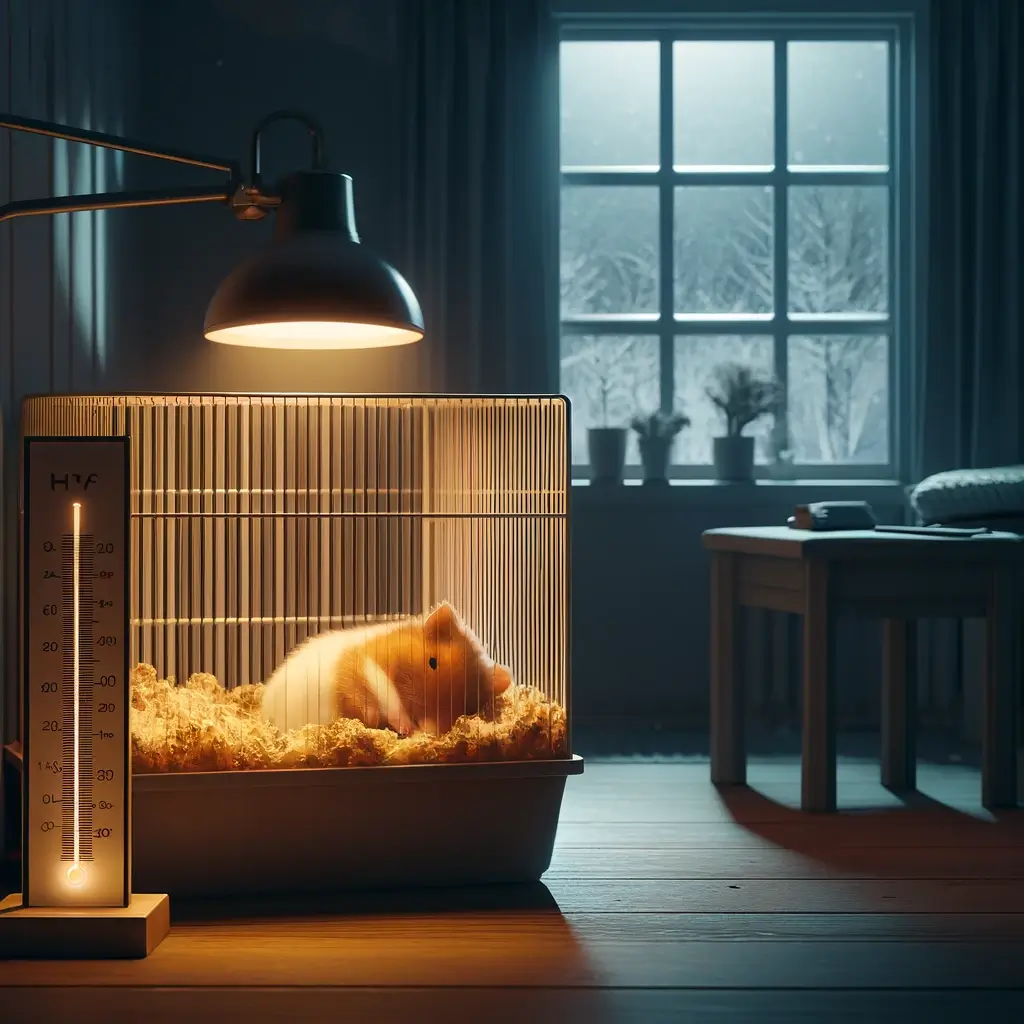
Despite your best efforts, there may be times when your hamster shows signs of preparing for hibernation. Regularly monitor your hamster’s behavior and watch for signs such as decreased activity, increased food hoarding, changes in appetite, and nest building.
If you suspect your hamster is entering hibernation, consult with your veterinarian immediately for guidance on how to safely revive your pet and prevent future hibernation attempts.
By following these guidelines and providing a safe, comfortable, and stimulating environment for your hamster, you can help prevent hibernation and ensure your furry friend remains active, healthy, and happy throughout their life.




